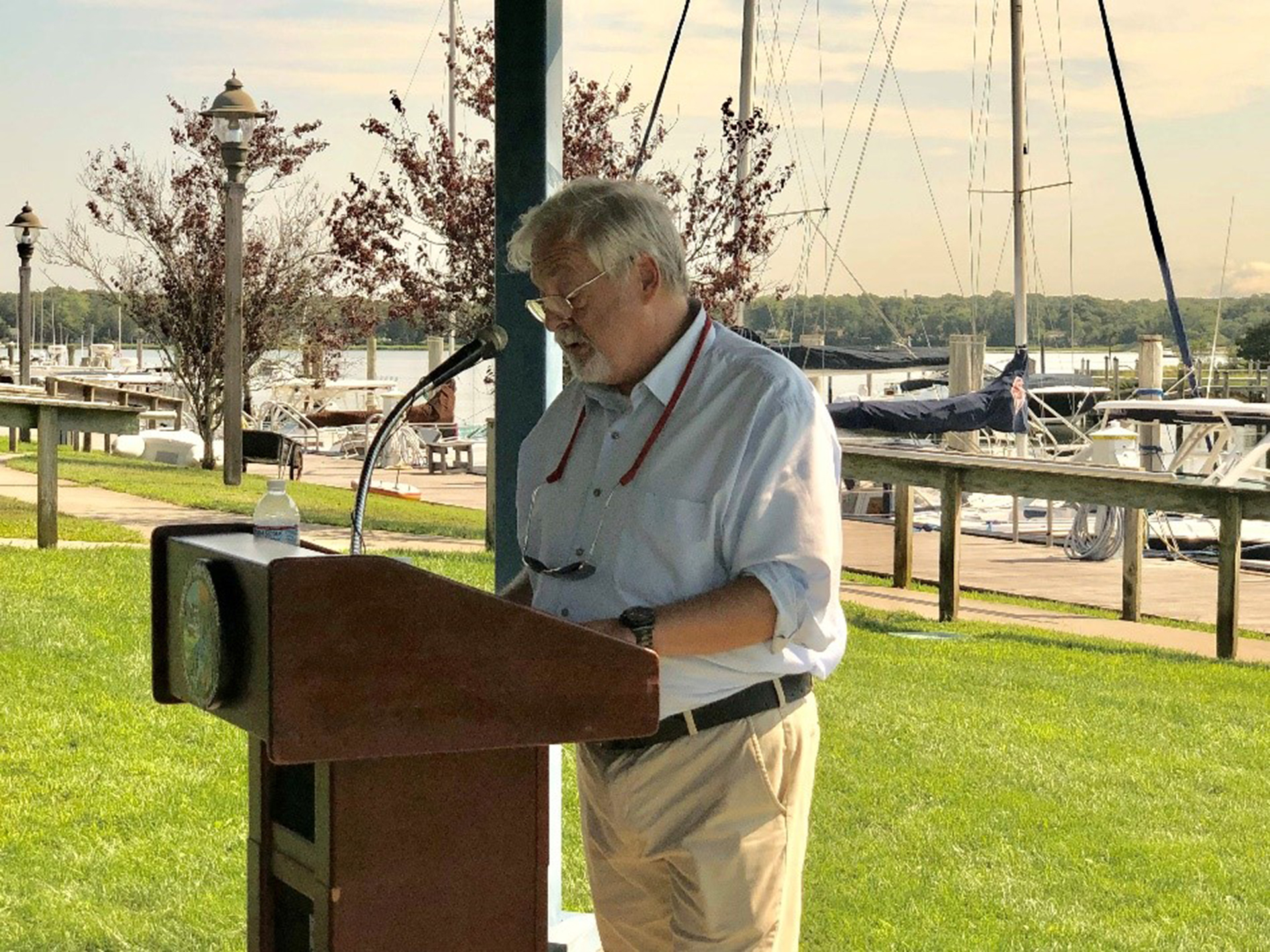Southampton Strives For Sustainable Future


“As we continue to see Earth change and we notice our local communities change, we are forced to both adjust to the new normal and take a step back to evaluate how and if we will play a role as stewards on this planet.” — Trevor Nace, senior science contributor, Forbes.
At the Conscience Point Marina in North Sea August 19, Councilman John Bouvier demonstrated Southampton Town’s commitment to its goal of being 100 percent renewable by 2025, relying on alternative energy sources like wind and solar power to eliminate the pollution that accompanies fossil fuel energy.
With the Sustainable Southampton Green Advisory Committee, of which the councilman is a co-executive officer, he demonstrated that environmental stewardship, and its improvement on residents’ quality of life. It’s done through multiple programs and policies designed to reduce greenhouse gases.
Bouvier and Trustee Ann Welker, along with members of the sustainability committee, powered a battery-operated boat to demonstrate how clean renewable battery technology is being embraced by all sectors, including marine.
“I am always amazed by what determined and creative people can do,” Bouvier said. “This Southampton Town administration is blessed with such talent exhibited both by staff and those that give their time and skills, like the folk on our committees, to help us reach energy and environmental goals that are critical to the future.”
At the beginning of the month, the town board voted unanimously to hire a Community Choice Aggregation administrator — proceeding down a path to seek an alternative provider for electricity from renewable sources at a lower price than what town residents are paying now.
Within the last year, Southampton has transitioned all 1778 streetlights that consume two million kilowatt hours a year to LEDs, saving the town one million kilowatt hours and $268,000 annually. Southampton is also in the process of replacing its fleet of vehicles with electric or hybrid ones — as leases come up for renewal — along with its lawn and maintenance equipment. A solar array was also placed on the Tiana Beach Pavilion, and the town is evaluating current proposals to add solar to town buildings, while applying for grant funding to remediate brownfield sites and prepare them for solar installation.
Solarize Southampton, a program, like most on the energy front, run under Department of Municipal Works Director Christine Fetten, tripled the number of rooftop solar applications. New residential houses over 4500 square feet must now meet a more stringent target, and this results in a more efficiently built house, uses less energy to operate, and typically has rooftop solar or geothermal heating and cooling. There’s also a fast track for residential solar permitting.
Other local efforts have resulted in the Cornell Cooperative Extension program at the Tiana Bayside Education Center to promote aquaculture and estuary restoration practices, limits on the use of fertilizer through wetland covenants, and installation of electric vehicle charging stations at Ponquogue Beach.
“I sometimes refer to Councilman Bouvier as the educator-in-chief on the town board as it relates to sustainability issues,” Deputy Supervisor Frank Zappone said. “The reality is that in almost all instances where the town board voted on sustainability policies and/or programs, the votes have been unanimous, testimony to the shared leadership and commitment of the town board.”
Besides working toward being 100 percent renewable, the town is also looking to be carbon neutral by 2040. It goes hand-in-hand with Governor Andrew Cuomo’s Clean Energy Standard. He’s committed to seeing an 80-percent reduction in greenhouse gas emissions over 1990 levels by 2025; source 50 percent of the state’s electricity from renewable resources by 2030, with proposed expansion to 70 percent; 9000MW of offshore wind by 2035; 1500MW of energy storage by 2025; while reshaping the state’s energy efficiency, clean energy, and energy innovation programs.
“These are just the first steps,” Bouvier said. “We share a common goal, and know that inaction is just not an option.”
desiree@indyeastend.com



